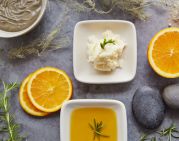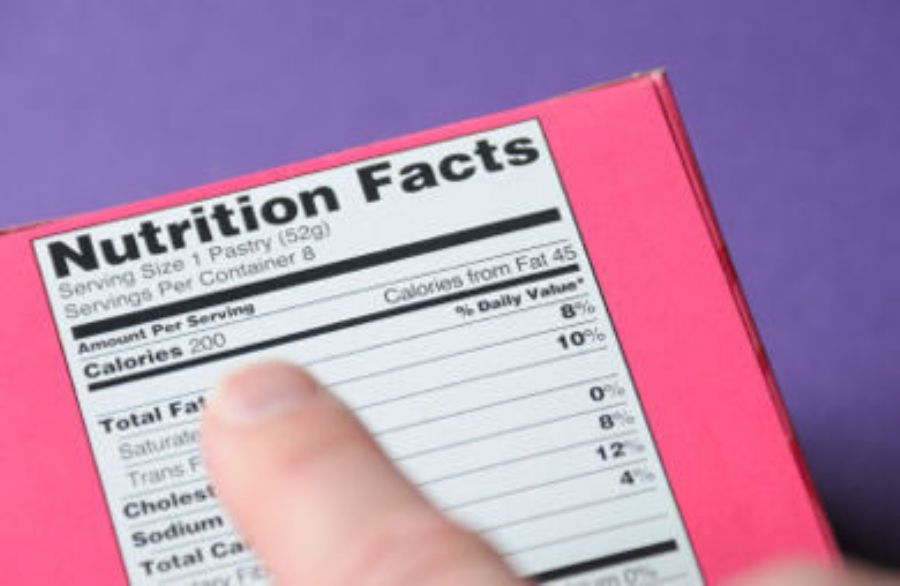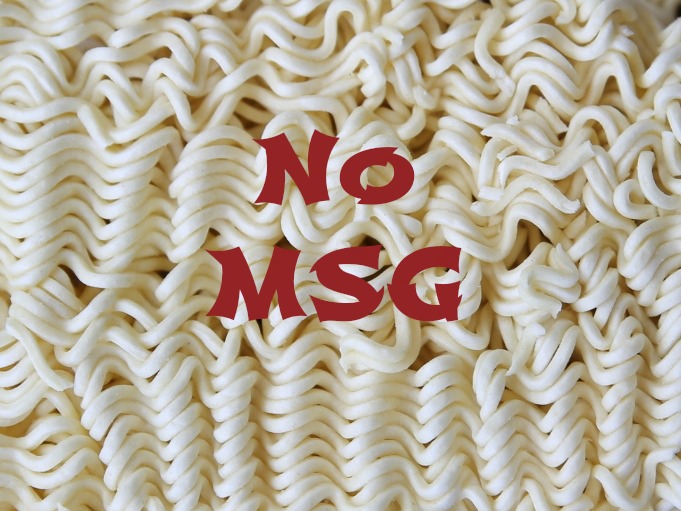40 bad fats on food labels
Top 10 High Fat Foods to Avoid - myfooddata Read ingredient labels and avoid any trans or partially hydrogenated fats or oils. High-fat foods to avoid include fast foods, whipped cream, fatty meats, fried foods, fatty snacks, processed meats, desserts, fatty salad dressings, animal fats, and trans-fats. ( 1) The daily value (DV) for fat is 78 grams per day. ( 2) What Are the Fats Not Listed on Nutrition Labels ... Vegetable oils, especially canola, olive and peanut oils, almonds, hazelnuts, pecans, pumpkin seeds and sesame seeds are all good sources of monounsaturated fats. Polyunsaturated Fats...
How to Read a Food Label & How to Find Unhealthy Hidden ... These types of fats help children absorb vitamins and compliment cognitive skills. However, too much of any fat can be burdensome and lead to weight gain. Now when reading a food label, you need to make sure that the product does not have too much saturated fat; and that it does not have any trans fats. Trans fats should be avoided. Trans Fat

Bad fats on food labels
On some food labels, there is also just an indication of how much fat is contained in a product but there is no differentiation between good and bad fats. Even though all kinds of fats contain a similar amount of calories, there are still huge differences regarding their health effects. How to Understand and Use the Nutrition Facts Label | FDA Saturated fat, sodium, and added sugars are nutrients listed on the label that may be associated with adverse health effects - and Americans generally consume too much of them, according to the... 9 Nutrition Claims and Misleading Food Labels to Be Wary ... Aim for less saturated fat, trans fat, sodium and added sugar (not naturally occurring sugar)." When reading the DV percentage, the general rule is that anything less than 5 percent is considered low and anything greater than 20 percent is considered high, Shah says. To help you make smarter food choices when grocery shopping, dietitians ...
Bad fats on food labels. Good Fats vs. Bad Fats: Everything You Need to Know Short for "trans fatty acids," trans fat appears in foods that contain partially hydrogenated vegetable oils. These are the worst fats for you. You might find trans fat in: fried foods (French... What Foods Are High in Fat? High-Fat Foods to Avoid Foods high in fat to avoid These foods are rich in bad fats, namely, saturated and trans fats and should be avoided: Deep-fried foods (French fries, fritters, chips) Cakes, muffins, cookies Ice cream and other frozen desserts Red meat (steak) and processed meats (bacon, sausage) Chicken skin Butter, margarine, lard Fat Content on Food Labels - Reading Between the Lines ... The Mayo Foundation continued, "Still, you may be able to tell if a product contains trans fat, even if it's not directly listed on the food label. Look for the words ' hydrogenated ' or 'partially hydrogenated' in the list of ingredients. These terms indicate that the product contains trans fat. Good Fats, Bad Fats :: Diabetes Education Online "Bad" fats increase your risk for coronary heart disease, and need to be limited in your diet: Saturated fats Hydrogenated fats Trans fats Saturated fats, which usually come from animal sources, are naturally solid at room temperature. Examples are lard, butter, milk fat, meat, chicken and pork skin, ice cream and cheese.
Food Labels: Fat & Cholesterol | Home & Garden Information ... Eating too much total fat, saturated fat, trans fat or cholesterol may increase your risk of certain chronic diseases, like heart disease, high blood pressure and some cancers. Facts on Food Labels Food labels contain clues to a food's fat and cholesterol content, including the amount per serving. Which Fats Are Good & Bad for Your Health? - eMediHealth When grocery shopping, be sure to read the nutrition label to determine if a food item contains trans fat. Best Sources of Good Fat. Many foods contain "good fats." These fats are monounsaturated and polyunsaturated fats found in a variety of nutritious foods that can easily be incorporated into your diet. Some food sources of good fats ... How to Read Food Labels - Next Avenue To see why, let's take a look at this food label (above). It's the Nutrition Facts and ingredients list for a very popular high-protein, high-fiber snack food. When shopping around for a snack ... Good fats and bad fats - Saga If a food product has these words on the label it must contain 25% less fat than a similar standard product. This can still mean a lot of fat! Read the label carefully to see how much fat there is in 100g of the food. Less than 5% fat - or 95% fat free This means that the food has less than 5g of fat per 100g.
Interpreting Total Fat and Types of Fat on Food Labels ... Trans fats and, in some cases saturated fats, are considered "unhealthy" or "bad" while monounsaturated and polyunsaturated (omega-3) fats are generally healthier alternatives or "good" fats. Saturated fats are naturally found in animal-based foods including meats, dairy products and eggs. Facts about fat, the word natural on labels and gluten ... These oily fats are often referred to as high-density lipoprotein (HDL). Some of the foods high in HDL include but are not limited to olive oil, avocado, nuts, berries and salmon. These help lower... Reading food labels: Tips if you have diabetes - Mayo Clinic When you're looking at food labels, start with the list of ingredients. Keep an eye out for heart-healthy ingredients, especially those that are less processed, such as whole-wheat flour, soy and oats. Monounsaturated fats — such as olive, canola or peanut oils; nuts; and seeds — promote heart health, too. Facts about fat - NHS "Lower fat" labels For a product to be labelled lower fat, reduced fat, lite or light, it must contain at least 30% less fat than a similar product. But if the type of food in question is usually high in fat, the lower fat version may still be a high-fat food (17.5g or more of fat per 100g).
How To Read Food and Beverage Labels | National Institute ... Remember, organic foods may still have the same number of calories, fats, proteins, and carbs as a nonorganic food. While these descriptions or terms are regulated by the FDA, others aren't, so always check the nutrition label to see if the product matches your healthy eating goals.
Fat Facts: Good Fats vs. Bad Fats - WebMD The two fats to limit are: Saturated fat found in meats, butter, cream, or ice cream, and other foods with animal fat. Trans fat, a man-made fat found in some margarines or packaged baked. Here are...
Understanding Food Nutrition Labels | American Heart ... When the Nutrition Facts label says a food contains "0 g" of trans fat, but includes "partially hydrogenated oil" in the ingredient list, it means the food contains some trans fat, but less than 0.5 grams per serving. So, if you eat more than one serving, you could end up eating too much trans fat.
Easy Guide to Understanding Food Labels When You Have High ... Saturated fat is a type of fat that raises your total and LDL cholesterol and risk of heart disease, so intake should be limited. The average adult should consume less than 20 grams of saturated fat per day. Trans fat is more harmful and damaging to the arteries as it raises LDL (bad) cholesterol and lowers HDL (good) cholesterol.
The 6 Biggest Food Label Lies | Eat This Not That Doritos. The Crime: On its nutrition label, Frito-Lay reassures us that Doritos contain zero gram of trans fats. Problem is, it's a blatant lie! The Evidence: Partially hydrogenated oil is the primary source of trans fats, and these cheesy chips contain two types: partially hydrogenated soybean oil and partially hydrogenated cottonseed oil.
Food Label Detective: How to Spot the Good Fats - The Dr ... Both saturated fat and trans fat amounts are clearly listed underneath "Total Fat," although some foods labeled trans fat-free may still contain small amounts (up to 0.5 grams) of trans fat. That's why it's important to also check a food's ingredient list. Avoid foods that contain "partially hydrogenated oil," which means trans fat is present.
Trans Fats: The Truth in Labeling - Atkins After 2006, when the new labeling laws go into effect, the FDA will still allow manufactucturers to list "zero" under trans fats if there is less than ½ gram per serving of the food. They will also permit manufacturers to say "zero trans fats" on the label if a serving size contains a half gram or less. This is a bad rule that needs ...
en.wikipedia.org › wiki › Trans_fatTrans fat - Wikipedia Trans fat, also called trans-unsaturated fatty acids, or trans fatty acids, is a type of unsaturated fat that naturally occurs in small amounts in meat and milk fat. It became widely produced as an unintentional byproduct in the industrial processing of vegetable and fish oils in the early 20th century for use in margarine and later also in snack food, packaged baked goods, and for frying fast ...
Food Labels: 5 Harmful Ingredients To Avoid | ThePostGame.com Here are some of the worst ingredients that are added to many foods that you should look out for and avoid: Partially Hydrogenated Oil Partially hydrogenated oil is another name for a trans fat....
Food Labeling: Beware the "Health" Halo | Food Network ... Trans-fat free is defined as a food that contains less than 0.5 grams of trans fat per serving. But be aware that trace amounts of trans fat can be hidden in these foods.
› diet › guideTypes of Fat in Food: Understanding the Different Dietary Fats Read labels carefully before eating packaged or processed foods. The bottom line: To keep your heart -- and the rest of you -- healthy, get most of your fats from unsaturated sources.
Food Label Ingredients: How to Look for MSG, Trans Fat ... A food that promises to be trans fat free may in fact contain up to 0.5 grams of partially hydrogenated oils, a source of trans fats, ... check out the nutrient facts label. Four to 5 grams of ...
How to Read Nutrition Facts Labels the Right Way - GoodRx Bad fats Saturated and trans fats are the less healthy types of fats. Consuming them may have many negative health impacts, including higher levels of inflammation in the body and an increased risk of developing heart disease. Saturated fats Saturated fats are solid at room temperature and come from foods like butter and shortening.
PDF Food Label Tip: How to Choose Foods Low In Saturated Fat ... Compare food labels of similar products and choose the ones with the lowest % Daily Value* of saturated fat and cholesterol. In general, 5% or less is low. Twenty % or more is high. Also choose foods with no or low amounts of trans fat. Compare these two food labels: Whole Milk Fat-Free Milk. Ft e. These food labels are for one serving of milk ...
9 Nutrition Claims and Misleading Food Labels to Be Wary ... Aim for less saturated fat, trans fat, sodium and added sugar (not naturally occurring sugar)." When reading the DV percentage, the general rule is that anything less than 5 percent is considered low and anything greater than 20 percent is considered high, Shah says. To help you make smarter food choices when grocery shopping, dietitians ...
How to Understand and Use the Nutrition Facts Label | FDA Saturated fat, sodium, and added sugars are nutrients listed on the label that may be associated with adverse health effects - and Americans generally consume too much of them, according to the...
On some food labels, there is also just an indication of how much fat is contained in a product but there is no differentiation between good and bad fats. Even though all kinds of fats contain a similar amount of calories, there are still huge differences regarding their health effects.













Post a Comment for "40 bad fats on food labels"